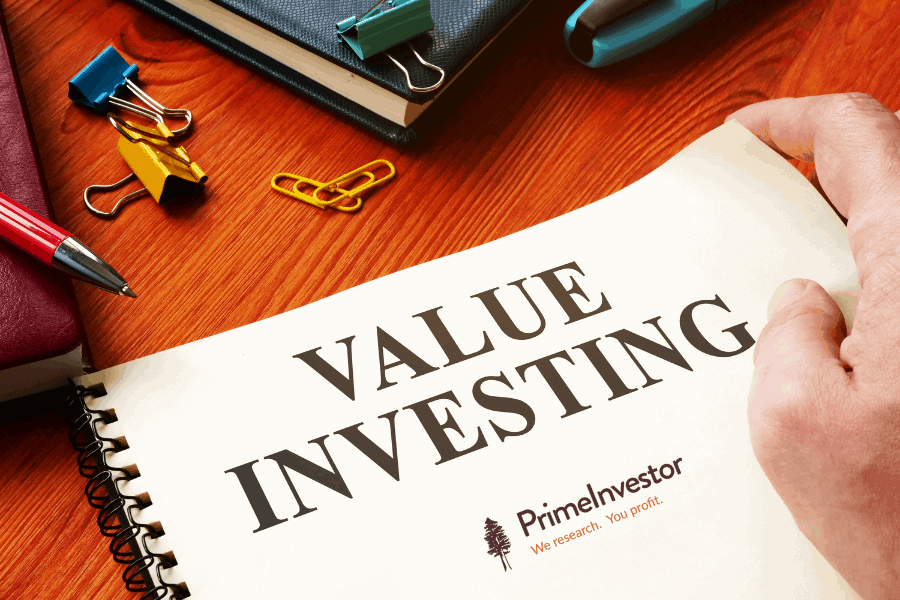Value investing is a well-known strategy that revolves around buying stocks that are undervalued by the market in comparison to their intrinsic value. Pioneered by investors like Benjamin Graham and Warren Buffett, value investing focuses on purchasing stocks at prices lower than their true worth, based on thorough analysis of the company’s fundamentals.
I have found that value investing is not about seeking quick profits but rather about identifying companies that the market has overlooked or mispriced. This strategy requires patience, as stocks may take time to reflect their true value. In this article, we’ll walk through the principles behind value investing, how to determine intrinsic value, and the methods that can help you identify stocks that are trading below their real worth.
Defining Intrinsic Value in Value Investing

1. What is Intrinsic Value?
Intrinsic value refers to the true, underlying worth of a company, based on fundamental analysis, regardless of its current market price. This valuation is derived from a deep dive into a company’s financials, growth potential, and overall stability. Unlike the market price, which can fluctuate due to short-term factors or market sentiment, intrinsic value represents what the company is truly worth in the long term.
Key Elements that Determine Intrinsic Value:
-
Earnings potential: The company’s ability to generate sustainable earnings over time is a core factor in determining its intrinsic value.
-
Assets and liabilities: A company’s balance sheet—its assets (like property and equipment) and liabilities (like debt)—also plays a significant role.
-
Growth prospects: The company’s future growth opportunities and the sectors it operates in impact its intrinsic value.
-
Dividend history: For companies that pay dividends, the consistency and growth of dividends are factored into intrinsic value.
Investors use various models to calculate intrinsic value, and the most commonly used methods include the discounted cash flow (DCF) analysis and comparisons with key financial ratios.
2. The Margin of Safety Concept
One of the key ideas behind value investing is the margin of safety. This concept suggests buying stocks at a significant discount to their intrinsic value, providing a cushion against potential risks. If a stock’s intrinsic value is calculated to be $100 but it’s currently trading at $70, there is a margin of safety of $30. This buffer helps protect the investor from market fluctuations or unforeseen downturns while still positioning them for future growth.
Identifying Undervalued Stocks
1. Price-to-Earnings (P/E) Ratio
The price-to-earnings (P/E) ratio is one of the most widely used tools for assessing whether a stock is undervalued. This ratio compares the market price of a company’s stock to its earnings per share (EPS). A lower P/E ratio typically suggests that a stock is undervalued, as the market is paying less for each dollar of the company’s earnings.
How to Use the P/E Ratio:
-
Industry comparisons: Compare the P/E ratio of a company with its competitors or the industry average. A significantly lower P/E ratio could indicate undervaluation.
-
Historical context: Compare the company’s current P/E ratio to its historical average. If it’s lower than its typical value, the stock may be undervalued.
However, keep in mind that a low P/E ratio may also suggest that there are fundamental issues with the company, such as declining earnings or negative growth prospects. Therefore, it’s essential to analyze other metrics and the broader context before making any investment decisions.
2. Price-to-Book (P/B) Ratio
The price-to-book (P/B) ratio compares a company’s market price to its book value, which is the value of its assets minus its liabilities. A P/B ratio under 1 can indicate that a stock is trading below its book value, possibly signaling an undervalued stock.
How to Use the P/B Ratio:
-
Undervalued assets: A low P/B ratio might suggest that the market is undervaluing the company’s physical assets.
-
Industry insights: Similar to the P/E ratio, comparing the P/B ratio to that of other companies in the same industry can provide useful context.
The P/B ratio is particularly useful for evaluating companies with substantial tangible assets, such as real estate firms, banks, and manufacturers.
3. Free Cash Flow (FCF)
Free cash flow (FCF) is the cash a company generates after accounting for capital expenditures, such as investment in property, equipment, and infrastructure. FCF is a key indicator of a company’s financial health, as it shows the company’s ability to reinvest in itself, pay off debt, or distribute dividends.
When a company has strong and consistent free cash flow, it often suggests a well-managed and stable company.
How to Use FCF:
-
Consistent positive cash flow: A company with consistently high free cash flow is more likely to be undervalued if its stock price is lower than its intrinsic value.
-
Debt management: Free cash flow can be used by a company to pay down debt, which strengthens its financial position over time.
Valuation Models for Determining Intrinsic Value
1. Discounted Cash Flow (DCF) Model
The Discounted Cash Flow (DCF) model is a detailed approach used to estimate the intrinsic value of a stock by calculating the present value of its expected future cash flows. This model is widely used because it focuses on the company’s ability to generate future cash, which is a key determinant of its value.
How the DCF Model Works:
-
Project future cash flows: Estimate the company’s free cash flow over a specific period, usually 5-10 years.
-
Choose a discount rate: Use a discount rate (often the Weighted Average Cost of Capital or WACC) to reflect the risk and time value of money.
-
Calculate the terminal value: After the projection period, estimate the company’s terminal value to account for its continuing value beyond the forecast.
-
Discount to present value: Calculate the present value of the future cash flows and terminal value to determine the intrinsic value.
2. Dividend Discount Model (DDM)
The Dividend Discount Model (DDM) is specifically useful for companies that pay regular dividends. This model values a company by estimating the present value of its future dividends.
How the DDM Works:
-
Estimate dividends: Forecast the company’s dividends over a set period.
-
Discount rate: Use a discount rate to adjust future dividends for the time value of money.
-
Calculate intrinsic value: The DDM sums the present value of future dividends to determine the stock’s intrinsic value.
Risks and Challenges in Value Investing
1. Market Timing and Sentiment
Value investing often requires patience, as undervalued stocks can take time to reach their intrinsic value. In periods of market volatility or economic uncertainty, stocks may remain undervalued for extended periods. As a value investor, it’s essential to have the discipline to stick with your strategy and hold your position long-term.
2. Value Traps
One of the significant risks of value investing is falling into a value trap—buying a stock that appears undervalued but is actually struggling due to fundamental issues, such as declining earnings, poor management, or an unsustainable business model. It’s critical for investors to conduct thorough research to differentiate between a legitimate undervaluation and a stock that is fundamentally flawed.
5. Conclusion: Building a Value Investing Strategy
Value investing focuses on buying stocks that are trading below their intrinsic value, offering a margin of safety for the investor. By using tools like the P/E ratio, P/B ratio, and DCF model, investors can identify undervalued stocks and position themselves for long-term growth. While this strategy requires patience and a disciplined approach, it can provide substantial rewards over time as the market recognizes the true value of these companies.
Value investing is about being selective and investing in companies with strong fundamentals and a proven ability to generate value over the long term. With careful analysis, patience, and an understanding of intrinsic value, value investors can build a portfolio that offers both safety and significant upside potential.
